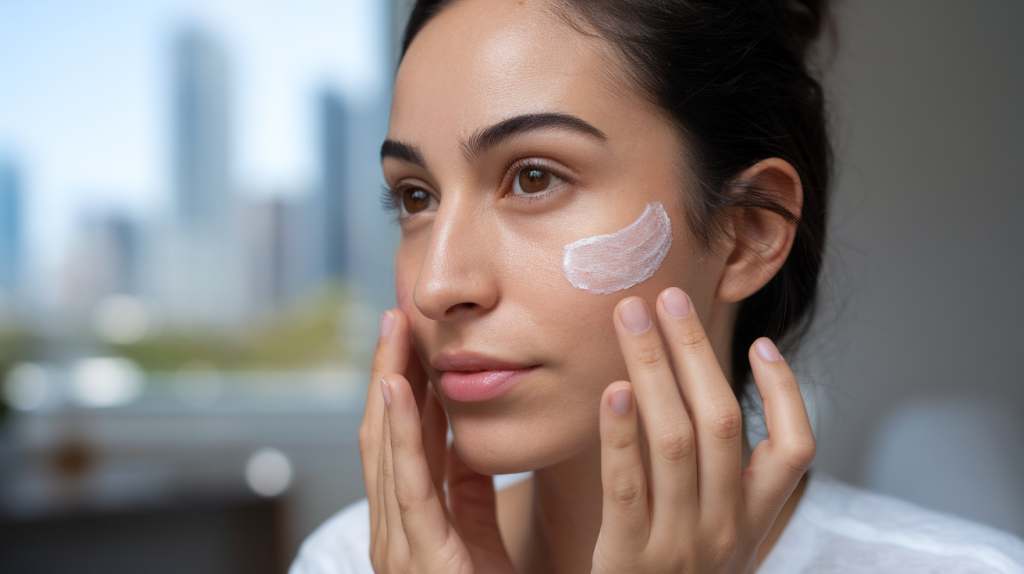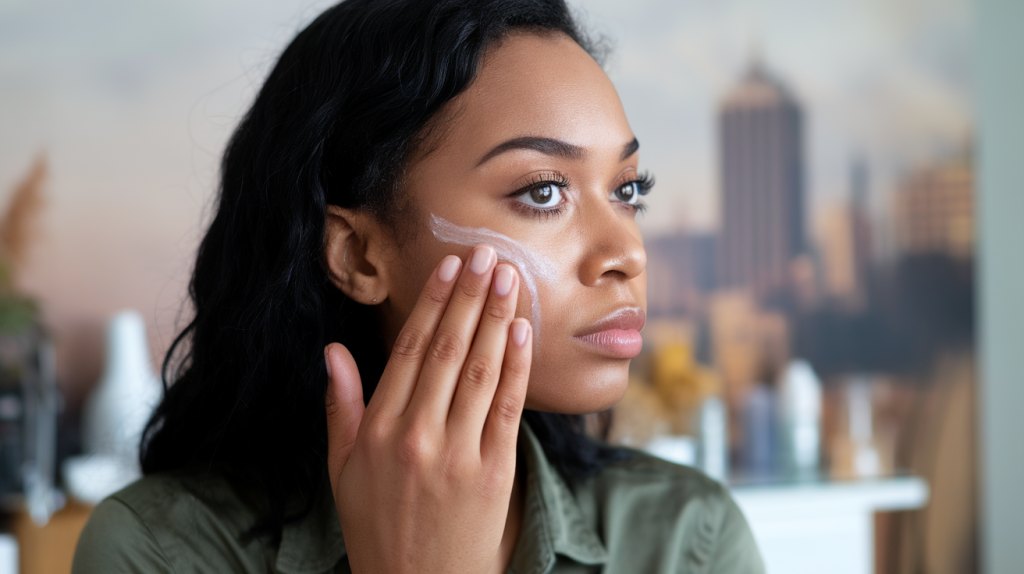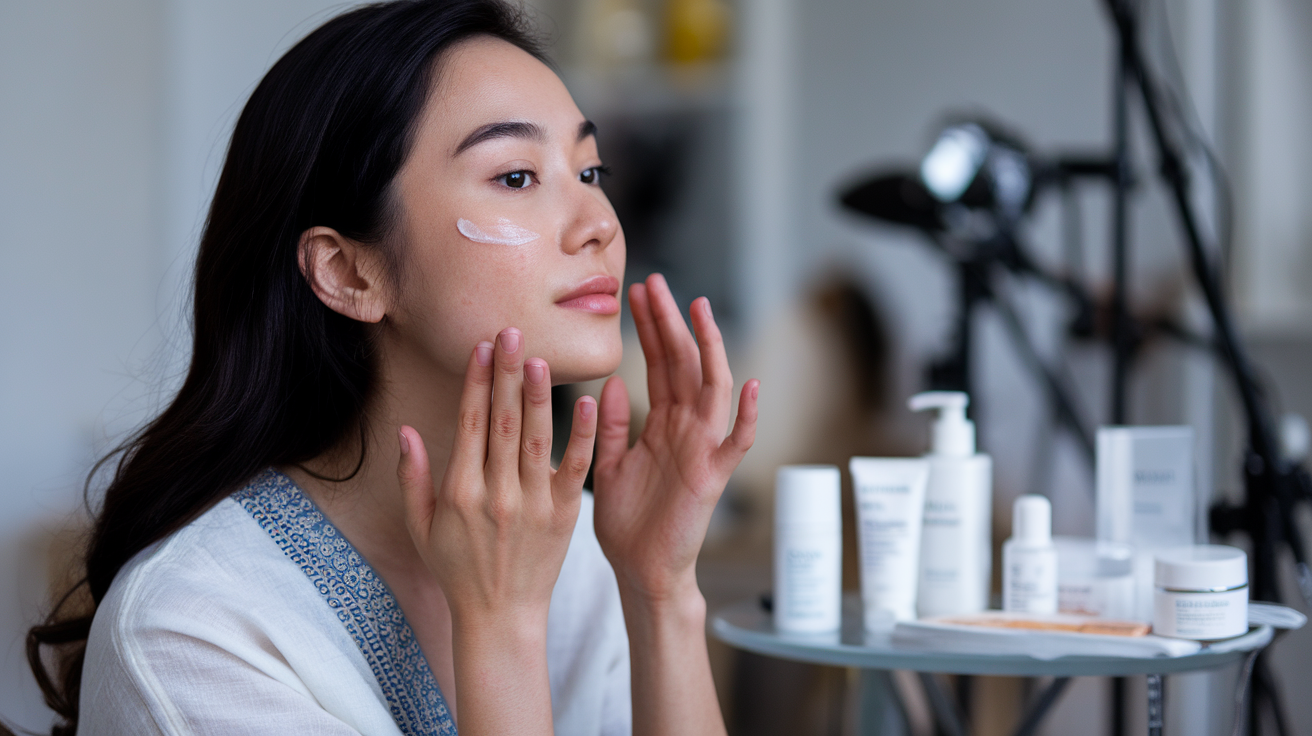Dull skin can be a frustrating concern for many women. It often leaves the complexion looking tired and lackluster, hiding your natural radiance. Fortunately, skincare acids offer a powerful solution to revive and rejuvenate your skin.
These potent ingredients work wonders in combating dullness by gently exfoliating dead skin cells, promoting cell turnover, and revealing a fresher, more luminous complexion. From glycolic to hyaluronic acid, each type targets specific skin issues, helping to address uneven tone, rough texture, and lack of glow.
Let’s explore the world of skincare acids and their remarkable benefits. We’ll discuss the best acids for brightening dull skin, how to incorporate them into your routine safely, and the most effective combinations for maximum results. Get ready to say goodbye to lackluster skin and hello to a radiant, healthy glow.
- What Are the Best Acids for Reviving Dull Skin?
- How Do Different Acids Target Specific Skin Concerns?
- What's the Right Way to Incorporate Acids into Your Skincare Routine?
- Which Acid Combinations Work Best for Dull Skin?
- How Can You Protect Your Skin While Using Acids?
- Glowing Skin Ahead: Your Acid-Powered Journey
- Frequently Asked Questions
What Are the Best Acids for Reviving Dull Skin?

Dull skin can make you look tired and older than you are. But don’t worry! Skincare acids are here to help. These powerful ingredients can transform your complexion, bringing back that youthful glow you’ve been missing.
So, which acids should you use to revive your dull skin? Let’s explore the top contenders:
Glycolic Acid: The Ultimate Exfoliator
Glycolic acid is a superstar when it comes to brightening dull skin. It’s the smallest alpha-hydroxy acid (AHA), which means it can penetrate deeply into your skin. This acid works by dissolving the bonds between dead skin cells, allowing them to shed more easily.
What makes glycolic acid so effective? Its ability to stimulate collagen production and improve skin texture. Regular use can lead to smoother, more radiant skin. However, it’s important to start with a low concentration and gradually increase to avoid irritation.
Lactic Acid: Gentle Yet Effective
If you have sensitive skin, lactic acid might be your new best friend. It’s milder than glycolic acid but still packs a punch when it comes to exfoliation. Lactic acid is derived from milk and works similarly to other AHAs.
One of the best things about lactic acid is its ability to hydrate while it exfoliates. This dual-action makes it perfect for those with dry, dull skin. It can help improve skin tone and texture without causing excessive dryness or irritation.
Mandelic Acid: A Skin-Brightening Powerhouse
Mandelic acid is another AHA that deserves your attention. It’s derived from bitter almonds and has a larger molecular size than glycolic acid. This means it penetrates the skin more slowly, making it gentler and less likely to cause irritation.
What sets mandelic acid apart is its antibacterial properties. This makes it an excellent choice for women who struggle with both dullness and acne. It can help brighten your skin while also keeping breakouts at bay.
Salicylic Acid: Unclogging Pores for Radiance
Salicylic acid is a beta-hydroxy acid (BHA) that’s oil-soluble. This unique property allows it to penetrate deep into your pores, clearing out excess oil and dead skin cells. For women with oily or acne-prone skin, salicylic acid can be a game-changer.
By keeping your pores clear, salicylic acid helps prevent the buildup that can lead to a dull, congested complexion. It also has anti-inflammatory properties, which can help reduce redness and create a more even skin tone.
Hyaluronic Acid: Hydration for a Healthy Glow
While not an exfoliating acid, hyaluronic acid is crucial for achieving radiant skin. It’s a humectant, which means it can hold up to 1000 times its weight in water. This incredible hydrating ability can plump up your skin, reducing the appearance of fine lines and giving you a dewy glow.
Hyaluronic acid works well with other acids, helping to counteract any drying effects they might have. It’s suitable for all skin types and can be used daily to keep your skin hydrated and luminous.
When incorporating these acids into your skincare routine, remember:
- Start with low concentrations and gradually increase
- Use sunscreen daily, as acids can increase sun sensitivity
- Don’t mix too many acids at once to avoid irritation
- Be patient – it can take several weeks to see results
With the right combination of these powerhouse acids, you can say goodbye to dull skin and hello to a radiant, glowing complexion. Your skin will thank you for the extra care and attention!
How Do Different Acids Target Specific Skin Concerns?

Skincare acids are like superheroes for your face, each with its own special power to combat specific skin issues. Understanding how these acids work can help you choose the right one for your skin concerns.
Tackling uneven skin tone
Do you struggle with dark spots or patches on your skin? Certain acids can help even out your complexion. Kojic acid, for example, is excellent at fading hyperpigmentation. It works by inhibiting the production of melanin, the pigment responsible for skin color.
Another powerful option is vitamin C, an acid that brightens skin and fades dark spots. It’s not just for oranges anymore! Regular use of vitamin C serums can lead to a more uniform skin tone over time.
Smoothing out rough texture
Rough, bumpy skin can be frustrating. Luckily, there are acids that specialize in smoothing things out. Alpha-hydroxy acids (AHAs) like glycolic and lactic acid are your go-to for this issue.
These acids work by dissolving the bonds between dead skin cells, allowing them to shed more easily. The result? Smoother, softer skin that feels great to touch. Start with a low concentration and use it a few times a week to see improvement in your skin’s texture.
Minimizing the appearance of fine lines
Fine lines creeping up on you? Don’t panic! Certain acids can help minimize their appearance. Retinoids, derived from vitamin A, are the gold standard for fighting signs of aging. They boost collagen production and speed up cell turnover, which can reduce the appearance of fine lines and wrinkles.
Here’s a quick guide to using retinoids:
- Start with a low concentration (0.01% or 0.025%)
- Use only at night, as they can make your skin sensitive to sunlight
- Apply a pea-sized amount for your entire face
- Always follow up with a moisturizer to combat dryness
Addressing acne and blemishes
Acne can be a persistent problem, even beyond the teenage years. But don’t worry, there’s an acid for that too! Salicylic acid is your best friend when it comes to fighting acne. This beta-hydroxy acid (BHA) can penetrate deep into pores, clearing out excess oil and dead skin cells that can lead to breakouts.
For stubborn acne, you might want to try azelaic acid. It has antibacterial properties and can help reduce inflammation. Plus, it’s gentle enough for most skin types, even if you’re prone to redness or sensitivity.
Boosting overall skin radiance
Who doesn’t want glowing, radiant skin? To achieve that healthy glow, you need a combination of exfoliation and hydration. Mandelic acid is a great option for boosting radiance. It’s gentler than other AHAs, making it suitable for sensitive skin types.
Hyaluronic acid, while not an exfoliating acid, is crucial for achieving that dewy look. It’s a hydration powerhouse, capable of holding up to 1000 times its weight in water. By keeping your skin plump and hydrated, it creates a natural, healthy glow.
Remember, the key to using acids effectively is to start slow and listen to your skin. Not all acids work for everyone, and it’s okay to experiment to find what works best for you. Always patch test new products and introduce them gradually into your skincare routine.
With the right acids in your skincare arsenal, you can target your specific skin concerns and achieve the complexion you’ve always wanted. Happy acid hunting!
What’s the Right Way to Incorporate Acids into Your Skincare Routine?

Adding acids to your skincare routine can be a game-changer, but it’s important to do it right. Let’s explore how to incorporate these powerful ingredients safely and effectively.
Starting with lower concentrations
The golden rule of using skincare acids? Start low and go slow. Your skin needs time to adjust to these active ingredients. Beginning with a lower concentration helps minimize the risk of irritation and allows your skin to build tolerance gradually.
For example, if you’re new to glycolic acid, start with a product containing 5% or less. As your skin becomes accustomed to it, you can slowly work your way up to higher concentrations. This approach gives your skin the best chance to reap the benefits without experiencing adverse reactions.
Gradually increasing frequency of use
How often should you use acids in your skincare routine? The answer varies depending on the specific acid and your skin’s needs. However, a good rule of thumb is to start using the product once or twice a week.
As your skin adapts, you can slowly increase the frequency. Pay attention to how your skin responds. If you notice any redness, dryness, or irritation, it’s a sign to dial back the usage. Some people can eventually use certain acids daily, while others find that a few times a week is their sweet spot.
Combining acids with moisturizing ingredients
Acids can be drying, so it’s crucial to balance them with hydrating ingredients. This combination helps maintain your skin’s moisture barrier while still allowing the acids to work their magic.
Consider using a hydrating serum or moisturizer after applying your acid product. Ingredients like hyaluronic acid, ceramides, and glycerin are excellent choices for replenishing moisture. They help counteract any drying effects of the acids and keep your skin feeling comfortable and nourished.
Avoiding overuse and potential irritation
While acids can do wonders for your skin, too much of a good thing can be harmful. Overuse can lead to irritation, redness, and even damage to your skin’s protective barrier.
Signs that you might be overdoing it include:
- Persistent redness or stinging
- Flaking or peeling skin
- Increased sensitivity to other skincare products
- Breakouts in unusual areas
If you notice any of these symptoms, it’s time to take a step back. Reduce the frequency of acid use or switch to a lower concentration until your skin recovers.
Tailoring acid use to your skin type
Not all acids work the same for every skin type. Choosing the right acid for your specific needs can make a big difference in your results.
For oily or acne-prone skin, salicylic acid is often a great choice. It can penetrate pores and help control excess oil production. If you have dry or sensitive skin, lactic acid might be more suitable as it’s gentler and has hydrating properties.
Those with mature skin might benefit most from glycolic acid, which can help with fine lines and uneven texture. For combination skin, you might want to try using different acids on different areas of your face, targeting specific concerns in each zone.
Introducing acids into your skincare routine is a process. It requires patience and careful observation of how your skin reacts. Don’t rush the process or try to use too many acids at once.
Lastly, always use sunscreen during the day when incorporating acids into your routine. These ingredients can make your skin more sensitive to UV rays, so protecting your skin from sun damage is crucial.
By following these guidelines, you can harness the power of skincare acids safely and effectively, working towards the glowing, healthy complexion you desire.
Which Acid Combinations Work Best for Dull Skin?
Dull skin can be a frustrating concern, but combining the right acids can help restore your glow. Let’s explore some effective acid pairings that can revitalize your complexion.
Glycolic and hyaluronic acid for intense renewal
Glycolic acid, a powerful exfoliant, works wonders for removing dead skin cells and promoting cell turnover. When paired with hyaluronic acid, a hydration powerhouse, you get a dynamic duo that renews and plumps your skin.
This combination is particularly effective because:
- Glycolic acid clears away dull, dead skin
- Hyaluronic acid replenishes moisture
- Together, they create a smoother, more radiant complexion
However, be cautious when starting this regimen. Begin with a low concentration of glycolic acid and gradually increase as your skin adjusts.
Lactic and mandelic acid for sensitive skin
If your skin is easily irritated, you might think acids are off-limits. Not so! Lactic and mandelic acids are gentler options that can still deliver impressive results.
Lactic acid, derived from milk, is larger than glycolic acid molecules. This means it doesn’t penetrate as deeply, reducing the risk of irritation. Mandelic acid, from bitter almonds, is even larger and gentler.
Used together, these acids can:
- Gently exfoliate without causing redness
- Improve skin texture and tone
- Hydrate and brighten simultaneously
Try using a lactic acid serum at night and a mandelic acid toner in the morning for a balanced approach.
Salicylic and glycolic acid for acne-prone dull skin
Dealing with both acne and dullness? Salicylic and glycolic acids might be your perfect match. Salicylic acid, a beta-hydroxy acid (BHA), can penetrate pores and clear out excess oil. Glycolic acid, an alpha-hydroxy acid (AHA), works on the skin’s surface to remove dead cells.
This powerful combination can:
- Clear clogged pores
- Reduce acne breakouts
- Improve overall skin texture and brightness
A word of caution: these acids can be potent, so start with low concentrations and use them on alternate days to avoid over-exfoliation.
Azelaic and vitamin C for brightening
For those struggling with hyperpigmentation and uneven skin tone, azelaic acid and vitamin C make a formidable team. Azelaic acid helps to inhibit the production of excess melanin, while vitamin C is a potent antioxidant that brightens the skin.
Using these acids together can:
- Fade dark spots and acne scars
- Even out skin tone
- Protect against free radical damage
Consider using a vitamin C serum in the morning and an azelaic acid product at night for optimal results.
Polyhydroxy acids for gentle exfoliation
If you’re new to acids or have extremely sensitive skin, polyhydroxy acids (PHAs) might be your best bet. These are larger molecules that work more slowly and gently than other acids.
PHAs, such as gluconolactone and lactobionic acid, offer several benefits:
- Mild exfoliation without irritation
- Hydration and skin barrier support
- Antioxidant properties
You can use PHAs daily, even in combination with other gentle acids or hydrating ingredients like ceramides or niacinamide.
Remember, while these acid combinations can be effective, it’s crucial to introduce them slowly into your skincare routine. Always patch test new products and pay attention to how your skin reacts. If you experience any persistent irritation or redness, reduce the frequency of use or consult a dermatologist.
By carefully selecting and combining these acids, you can address multiple skin concerns simultaneously and say goodbye to dull skin. With patience and consistency, you’ll be on your way to a brighter, more radiant complexion.
How Can You Protect Your Skin While Using Acids?
Skincare acids can work wonders for your complexion, but they also require careful handling. Protecting your skin while using these powerful ingredients is crucial for achieving the best results without causing damage.
The importance of sunscreen application
Sunscreen is your skin’s best friend, especially when you’re using acids. These ingredients can make your skin more sensitive to UV rays, increasing the risk of sunburn and premature aging. Apply a broad-spectrum SPF 30 or higher every morning, even on cloudy days. Reapply every two hours if you’re spending time outdoors.
But why is sunscreen so important when using acids? Here’s a quick breakdown:
- Acids remove dead skin cells, exposing newer, more vulnerable skin
- UV rays can penetrate deeper into this freshly exfoliated skin
- Sunscreen creates a protective barrier, shielding your skin from harmful rays
Think of sunscreen as the armor your skin needs when you’re using acids. It’s not just about preventing sunburn; it’s about maintaining the health and appearance of your skin in the long run.
Balancing acids with nourishing ingredients
Using acids doesn’t mean you should skip on hydration and nourishment. In fact, it’s quite the opposite. Your skin needs extra TLC to maintain its barrier function and prevent irritation.
Consider incorporating these nourishing ingredients into your routine:
- Hyaluronic acid for hydration
- Ceramides to strengthen the skin barrier
- Niacinamide for soothing and brightening
- Peptides for skin repair and collagen production
You might wonder, “How do I use these with my acids?” A good rule of thumb is to apply your acid product first, wait a few minutes, then layer on your hydrating and nourishing products. This approach allows the acid to work effectively while providing your skin with the support it needs.
Recognizing signs of over-exfoliation
While acids can be beneficial, too much of a good thing can harm your skin. Over-exfoliation can lead to a damaged skin barrier, increased sensitivity, and even breakouts. So how do you know if you’re overdoing it?
Watch out for these warning signs:
- Excessive dryness or oiliness
- Redness or irritation that doesn’t subside
- Increased sensitivity to other skincare products
- A tight, shiny appearance to the skin
- Breakouts in unusual areas
If you notice any of these symptoms, it’s time to take a step back. Reduce the frequency of acid use or switch to a gentler formula. Your skin will thank you for the break.
Proper storage of acid-based products
Did you know that how you store your skincare products can affect their efficacy? This is especially true for acid-based products. Proper storage helps maintain the stability of the active ingredients and prevents them from degrading prematurely.
Here are some tips for storing your acid products:
- Keep them in a cool, dark place
- Avoid exposure to direct sunlight
- Ensure the container is tightly closed after each use
- Don’t store in the bathroom where humidity can affect the product
By following these storage guidelines, you’ll get the most out of your acid-based products and maintain their effectiveness for longer.
When to seek professional advice
While many women can successfully incorporate acids into their skincare routine at home, there are times when professional guidance is necessary. A dermatologist or skincare professional can provide personalized advice based on your skin type and concerns.
Consider seeking professional help if:
- You have sensitive skin or a pre-existing skin condition
- You’re not seeing results after several weeks of consistent use
- You experience persistent irritation or adverse reactions
- You’re unsure about which acids or concentrations are right for your skin
A professional can help you navigate the world of skincare acids safely and effectively, tailoring a regimen that works best for your unique skin needs.
Remember, protecting your skin while using acids is all about balance. By following these guidelines, you can harness the power of skincare acids while keeping your skin healthy, happy, and glowing. Your skin is as individual as you are, so pay attention to how it responds and adjust your routine accordingly.
Glowing Skin Ahead: Your Acid-Powered Journey
Skincare acids offer a powerful way to transform dull skin into a radiant complexion. By understanding how different acids work and combining them effectively, you can address multiple skin concerns simultaneously. From glycolic acid’s intense exfoliation to the gentle touch of polyhydroxy acids, there’s an acid combination suited for every skin type and concern.
Remember, the key to success with skincare acids lies in proper use and protection. Always prioritize sun protection, balance acids with nourishing ingredients, and pay attention to your skin’s responses. If you’re ever in doubt, don’t hesitate to seek professional advice. With patience and consistency, you’ll be well on your way to achieving the glowing, healthy skin you desire. Your skin is as individual as you are, so embrace the journey of discovering what works best for you.
Frequently Asked Questions
Q: What are the best acids for reviving dull skin?
A: The best acids for dull skin include glycolic acid for exfoliation, lactic acid for gentle renewal, mandelic acid for brightening, salicylic acid for unclogging pores, and hyaluronic acid for hydration.
Q: How should I start incorporating acids into my skincare routine?
A: Start with lower concentrations and use them once or twice a week. Gradually increase frequency as your skin adjusts, always monitoring for any signs of irritation.
Q: Can I combine different acids in my skincare routine?
A: Yes, you can combine acids, but do so carefully. For example, glycolic and hyaluronic acid work well together for intense renewal, while lactic and mandelic acid are good for sensitive skin.
Q: How important is sunscreen when using skincare acids?
A: Sunscreen is crucial when using acids. Apply a broad-spectrum SPF 30 or higher daily, as acids can make your skin more sensitive to UV rays.
Q: What are the signs of over-exfoliation when using acids?
A: Signs of over-exfoliation include excessive dryness or oiliness, persistent redness or irritation, increased sensitivity to other products, and breakouts in unusual areas.
Q: How should I store my acid-based skincare products?
A: Store acid-based products in a cool, dark place, away from direct sunlight. Keep containers tightly closed and avoid storing them in humid environments like bathrooms.
Q: Are skincare acids safe for all skin types?
A: While there are acids suitable for most skin types, those with sensitive skin or pre-existing conditions should consult a dermatologist before incorporating acids into their routine.
Q: How long does it take to see results when using skincare acids?
A: Results can vary, but you may start seeing improvements in skin texture and brightness within a few weeks of consistent use. However, for significant changes, it may take several months.

